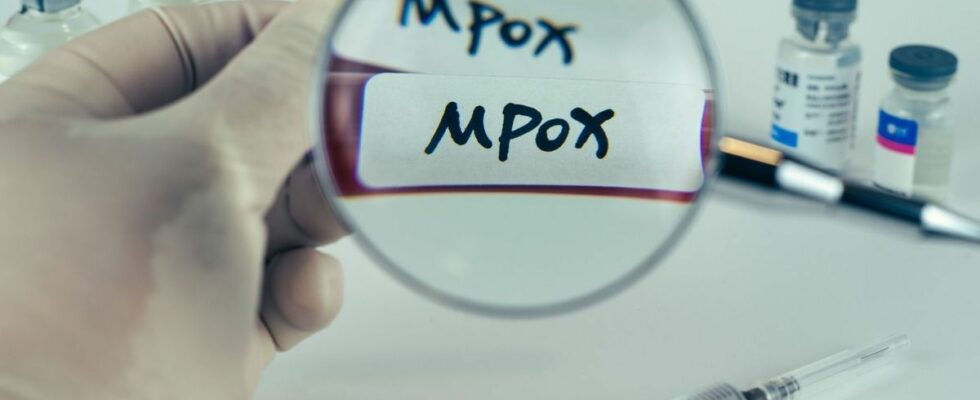Published on
updated on
Reading 2 min.
Droplets are a “minor” route of transmission of MPOX, a WHO spokeswoman said on Tuesday, stressing that further research is needed to better understand “the transmission dynamics” of the virus.
According to the World Health Organization (WHO), mpox is transmitted from person to person mainly through “close contact.”
Contamination modes revealed
On its website, the WHO explains that close contact means “skin-to-skin contact (e.g. touching or sexual intercourse) and mouth-to-mouth or mouth-to-skin contact (e.g. kissing).
And also “being in front of someone (talking or breathing nearby and thus coming into contact with infectious respiratory particles)“.
“If you talk to someone up close, if you breathe on them, if you’re physically close to them, it’s possible that the droplets, if you have lesions, can spread to someone else.“, WHO spokeswoman Margaret Harris said at a regular press briefing in Geneva.
“But this is a minor source.“of transmission,” she insisted. In any case, she added, “Further research is needed to fully understand the dynamics of transmission” of the virus.
Clean potentially contaminated surfaces
According to the WHO, it is also possible for the virus to remain present for some time on clothes, linen, objects… and surfaces that have been touched by a person with the disease.
A person who touches them in turn could also be at risk of infection if they have cuts or abrasions or if they touch their eyes, nose, mouth or other mucous membranes before washing their hands.
WHO recommends cleaning and disinfecting surfaces and objects and washing hands after touching potentially contaminated surfaces or objects.
Lack of data on hazards
However, she does not recommend the widespread wearing of masks. Wearing masks is recommended for people with MPOX, their contacts and health care workers, Harris said.
According to the WHO, people with COPD are contagious until all of their lesions have crusted over, the scabs have fallen off and a new layer of skin has formed underneath, and all lesions on the eyes and body have healed, which takes “two to four weeks.”
The resurgence of MPOX in Africa, affecting the Democratic Republic of Congo (DRC), but also Burundi, Kenya, Rwanda and Uganda, and the appearance of a new variant (1b) prompted the WHO to trigger its highest level of global alert on August 14.
In the DRC “circulating at the same time: clade 1a and clade 1b“, but “we don’t have the data” to say that one is more dangerous than the other, Harris insisted.
MPOX, formerly called monkeypox, is a viral disease that spreads from animals to humans but is also transmitted between humans, causing fever, muscle aches and skin lesions.
WHO estimates that $135 million is needed to finance the international response to MPOX over the next six months. It launched an appeal on Tuesday for $87.4 million to support its own efforts to combat the virus.
